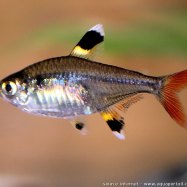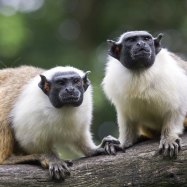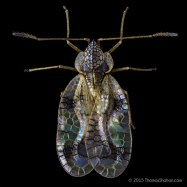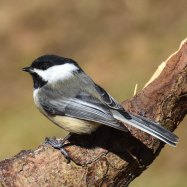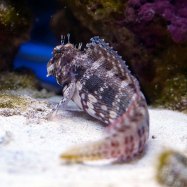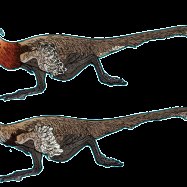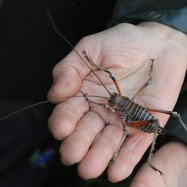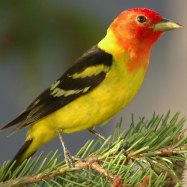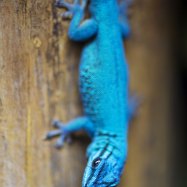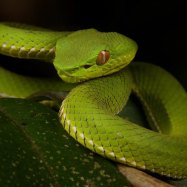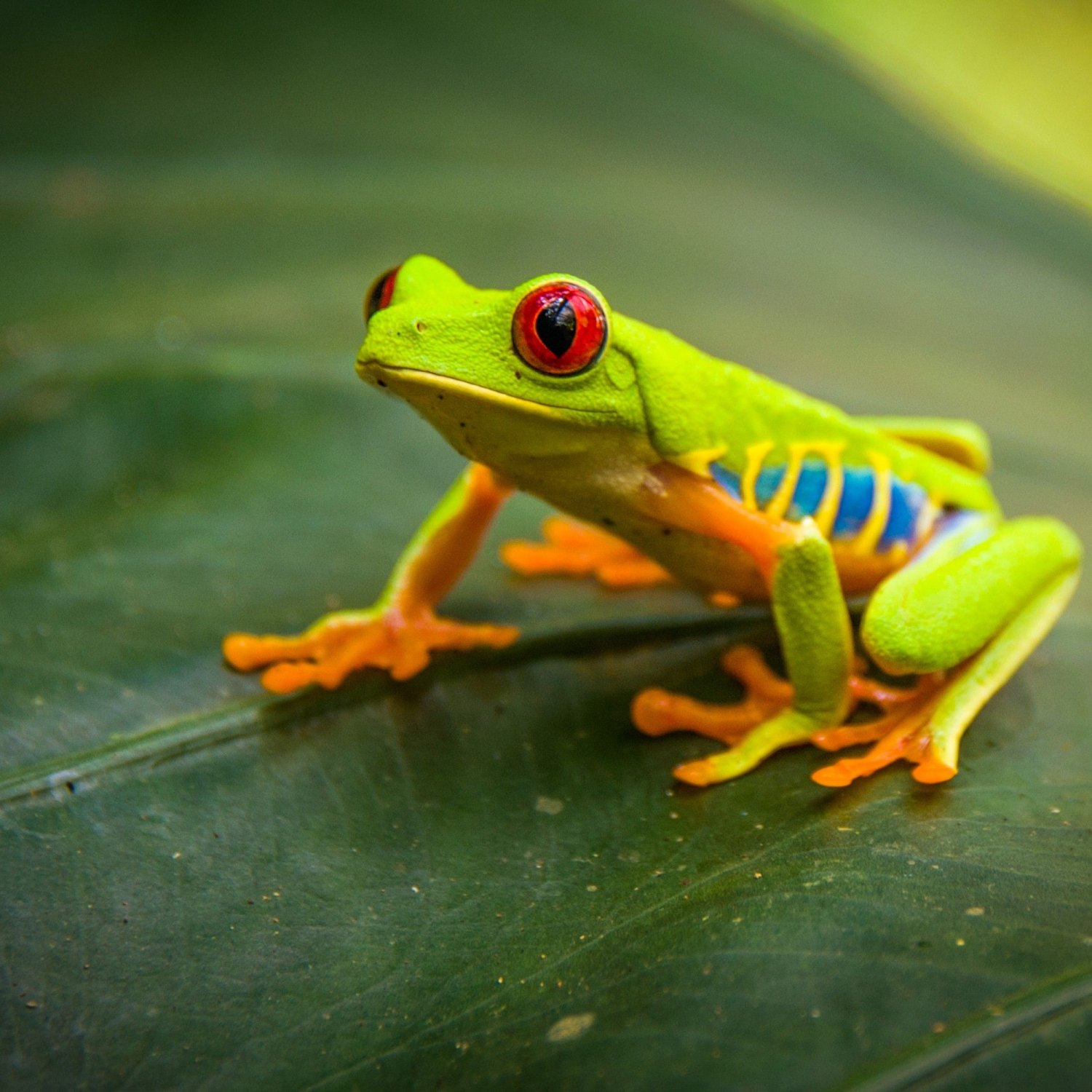
Tree Frog
1 to 4 inches
The tree frog, also known as the Hylidae family, is a small and slender amphibian that can grow up to 1 to 4 inches in length. These colorful creatures can be found in trees, shrubs, and other vegetation, making them excellent climbers. They have been known to thrive in various habitats, from tropical rainforests to urban gardens. With their unique body shape and vibrant colors, tree frogs are a sight to behold.
Animal Details Summary:
Common Name: Tree Frog
Kingdom: Animalia
Habitat: Forests, grasslands, wetlands, and urban areas
The Amazing Tree Frog: Nature's Little Acrobat
Nature is full of fascinating creatures that constantly surprise us with their unique features and abilities. One such creature is the tree frog, also known by its scientific name Hyla. These amphibians are often overlooked but are truly fascinating animals with incredible adaptations that allow them to survive in a variety of environments. From its impressive jumping ability to its vibrant coloration, the tree frog is a true marvel of nature Tree Frog.The Basics: Classification and Distribution
Before we delve into the exciting features of this little acrobat, let's first understand its classification and distribution. The tree frog belongs to the Kingdom Animalia, Phylum Chordata, and Class Amphibia. Their scientific name, Hyla, is derived from the Greek word "hyle" meaning "forest" in reference to their preferred habitat.Tree frogs can be found all over the world, with over 800 different species spread across the globe. They are found in a variety of habitats, including forests, grasslands, wetlands, and even urban areas. Their geographic distribution depends on the species, with some being found in only one country while others can be found on multiple continents. This makes the tree frog a truly diverse and adaptable animal.
Lifestyle and Habitat
As their name suggests, tree frogs are primarily arboreal, meaning they spend most of their time in trees and other vegetation. They have adapted to this lifestyle by developing specialized toe pads that allow them to grip onto branches and leaves, making them expert climbers Tawny Owl. Additionally, their small and slender body shape allows them to move swiftly and effortlessly through the dense foliage of their habitat.Another interesting fact about tree frogs is that they are mostly nocturnal, which means they are most active at night. This helps them avoid predators, as they blend in with their surroundings and can easily camouflage themselves in the darkness. During the day, they hide in tree crevices or burrow into the moist soil to escape the hot sun.
Diet and Feeding
Tree frogs are carnivorous creatures, meaning they mainly feed on insects such as crickets, beetles, and flies. Their diet can also include spiders, snails, and small vertebrates. These agile hunters can spot their prey from afar and use their long, sticky tongues to snatch them up in a lightning-fast motion. Their vision and quick reflexes make them efficient hunters, enabling them to survive in their diverse habitats.Colorful Creations
One of the most fascinating aspects of tree frogs is their striking coloration. They come in a variety of hues, ranging from bright greens and yellows to deep blues and reds. The coloration of tree frogs is crucial for their survival, as it serves as a form of camouflage. The vibrant colors help them blend in with the green foliage and dappled light of the forest, making it difficult for predators to spot them.Interestingly, the coloration of tree frogs can also indicate their health and reproductive status. When they are healthy and ready to mate, their colors become more vibrant and pronounced. This is a way for them to attract potential mates, and it also advertises their good health to potential predators.
The Tree Frog's Unique Adaptations
Aside from their amazing climbing abilities and camouflage, tree frogs have several other unique adaptations that help them survive in their environment. Firstly, their skin is permeable, meaning they can breathe and absorb water through it. This allows them to function efficiently in the moist environments where they are found.Moreover, tree frogs have incredible jumping abilities, which help them avoid predators and cover long distances to find new habitats. They can jump up to 20 times their body length, thanks to their powerful hind legs and flexible spine. This makes them one of the best leapers in the animal kingdom.
The Importance of Tree Frogs
Tree frogs play a crucial role in the ecosystem, as they act as both predators and prey. By feeding on insects, they help control insect populations, which is essential for maintaining balance in the ecosystem. On the other hand, they are food for a variety of predators, including birds, snakes, and other amphibians.Additionally, tree frogs are excellent indicators of environmental health. As amphibians, their skin is sensitive to changes in the environment, such as pollution and habitat destruction. Therefore, their presence or absence in an area can provide valuable information about the state of the ecosystem.
Threats and Conservation
Despite their amazing adaptations and importance in the ecosystem, tree frogs face several threats to their survival. The destruction of their habitats, pollution, and the introduction of invasive species are some of the major threats they face. Furthermore, they are also highly sought after in the pet trade industry, which has led to a decline in their populations in some areas.To protect these fascinating creatures, several conservation efforts are underway, including habitat protection and restoration, as well as breeding and re-introduction programs. Conservationists are also raising awareness about the importance of these little creatures and the need to protect their habitats.
In Conclusion
In conclusion, the tree frog is an incredible creature with unique features and adaptations that allow it to thrive in a variety of environments. From its vibrant coloration to its impressive jumping abilities, this little acrobat has captivated the hearts and minds of nature enthusiasts worldwide. As we continue to learn more about these creatures and their vital role in the ecosystem, it becomes clear that their conservation is crucial for the health and balance of our planet. So, the next time you are taking a walk in the woods, stop and listen for the gentle croak of the tree frog; you never know what fascinating creature may be lurking right above your head.

Tree Frog
Animal Details Tree Frog - Scientific Name: Hyla
- Category: Animals T
- Scientific Name: Hyla
- Common Name: Tree Frog
- Kingdom: Animalia
- Phylum: Chordata
- Class: Amphibia
- Order: Anura
- Family: Hylidae
- Habitat: Forests, grasslands, wetlands, and urban areas
- Feeding Method: Carnivorous
- Geographical Distribution: Global
- Country of Origin: Varies by species
- Location: Trees, shrubs, and other vegetation
- Animal Coloration: Varies by species
- Body Shape: Small and slender
- Length: 1 to 4 inches
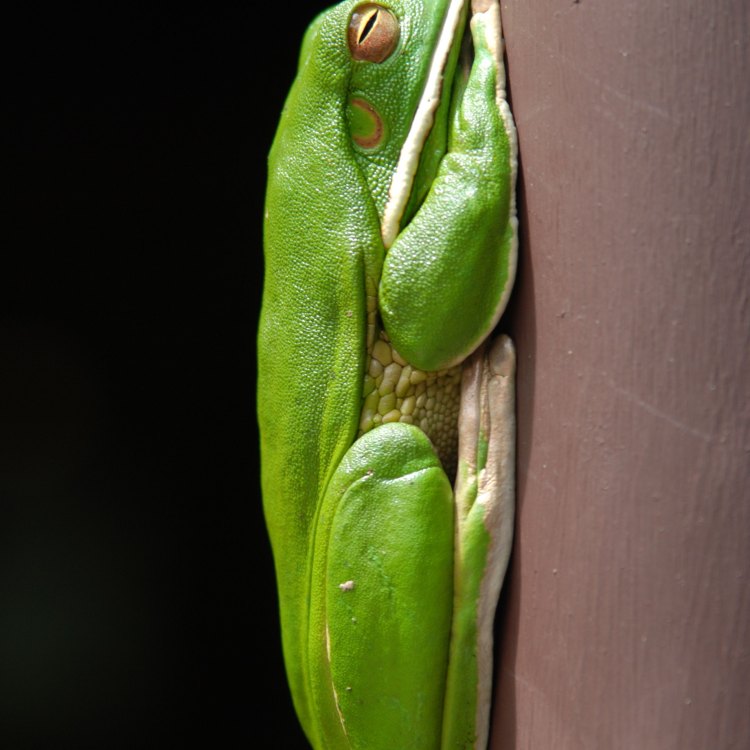
Tree Frog
- Adult Size: 1 to 4 inches
- Average Lifespan: 5 to 10 years
- Reproduction: Sexual
- Reproductive Behavior: Males attract females with calls
- Sound or Call: Loud vocalizations
- Migration Pattern: Some species migrate short distances
- Social Groups: Solitary
- Behavior: Nocturnal
- Threats: Habitat loss, pollution, climate change
- Conservation Status: Varies by species
- Impact on Ecosystem: Important insect control
- Human Use: Some species kept as pets
- Distinctive Features: Webbed feet and sticky toe pads
- Interesting Facts: Can change color to blend with surroundings
- Predator: Snakes, birds, and small mammals
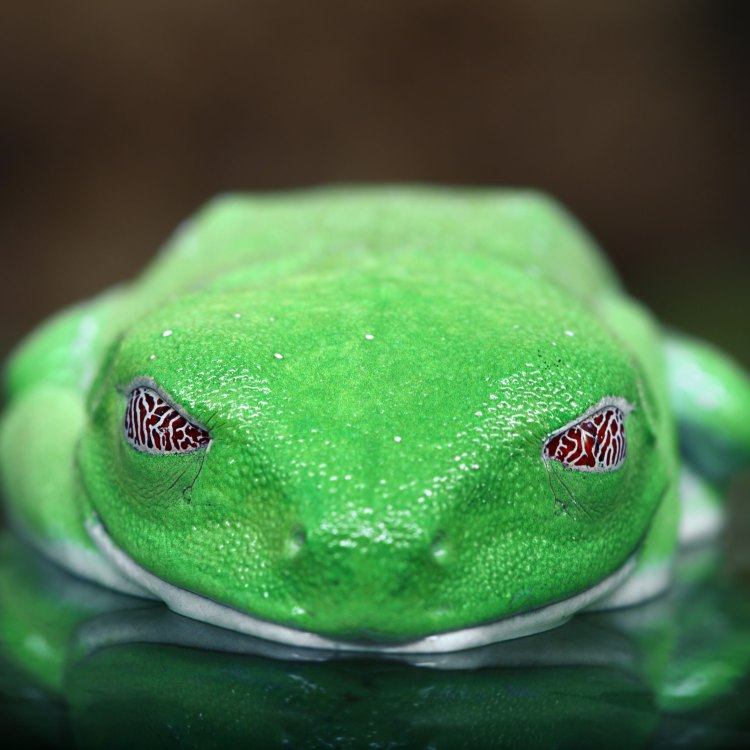
Hyla
The Fascinating World of Tree Frogs: A Tale of Survival and Adaptability
In the lush and diverse habitats of our world, one organism stands out for its unique characteristics and mesmerizing behavior - the tree frog. These small, colorful creatures have captured the hearts and imaginations of people for centuries with their distinctive features, interesting habits, and their ability to thrive in the face of adversity.From their tiny size of 1 to 4 inches to their surprisingly long lifespan of 5 to 10 years, tree frogs have defied the odds and flourished in a variety of environments. They are found in all corners of the globe, from tropical rainforests to arid deserts, exhibiting remarkable adaptability and tenacity PeaceOfAnimals.Com.
In this article, we will delve into the world of tree frogs, exploring their life cycle, behavior, threats, and their impact on the ecosystem. We will also uncover some interesting facts about these creatures that make them truly awe-inspiring.
Size and Lifespan
Tree frogs come in a variety of sizes, ranging from the tiny Roth's tree frog, measuring only 0.6 inches, to the larger giant waxy tree frog, reaching up to 4 inches. However, most species fall within the 1 to 4-inch range, making them small enough to fit comfortably on a person's fingertip.
Despite their small size, these amphibians have a surprisingly long lifespan compared to many other frog species. The average tree frog can live for 5 to 10 years, with some individuals even reaching up to 20 years in captivity. This is due to their ability to adapt and thrive in different habitats and conditions, making them one of the most resilient creatures on the planet.
Reproduction and Behavior
Like most amphibians, tree frogs reproduce sexually, with males and females coming together to mate Tree Kangaroo. However, what sets them apart is their unique reproductive behavior, where males use loud vocalizations to attract females. These calls can range from high-pitched chirps to deep croaks, and each species has its distinctive call.
During the breeding season, which varies depending on the species and location, males will perch on vegetation or even in water bodies, calling out to potential mates. Female tree frogs will then lay their eggs in a variety of locations, including in water, on leaves, or even inside tree holes. As eggs, they are protected from predators and the elements, giving them a higher chance of survival.
Sound and Migration
One of the most fascinating aspects of tree frogs is their ability to produce loud vocalizations, also known as calls. These calls are used for various purposes, including attracting a mate, signaling to other frogs, and defending territory. Due to their incredible volume, tree frogs' calls can sometimes be heard from miles away, creating a symphony of sounds in their natural habitats.
While some species of tree frogs are sedentary, remaining in one area throughout their lives, others exhibit short-distance migrations. These migrations can occur for various reasons, such as seeking out new food sources, escaping unfavorable conditions, or following mating opportunities.
Social Groups and Behavior
Tree frogs are generally solitary creatures, with adults living independently for most of their lives. However, during the breeding season, they come together in large groups to mate, creating a temporary social structure. Males will call and compete with each other for the attention of females, and after mating, the social groups disperse, and the frogs return to their solitary existence.
They are mostly nocturnal, preferring to stay hidden during the day and becoming active at night. This allows them to avoid predators, find food, and maintain their body temperature in cooler environments. Tree frogs are also very territorial animals, with males fiercely defending their territories from other males and predators.
Threats and Conservation
Like many other species, tree frogs are facing numerous threats to their survival. Habitat loss, caused by deforestation, urban development, and agricultural practices, is one of the most significant challenges for these amphibians. This leads to the destruction of their natural habitats, making it difficult for them to find food and shelter.
Pollution, specifically water pollution, also poses a severe threat to tree frogs. As amphibians, these creatures are highly sensitive to changes in their environment, and even small amounts of toxins in their habitat can have detrimental effects on their health and survival.
Climate change is another looming threat for tree frogs, as it alters their natural habitats, making it difficult for them to adapt. Warmer temperatures can lead to the loss of breeding sites, and changing rainfall patterns can affect their ability to find food and moisture.
Due to these threats, the conservation status of tree frogs varies by species. Some of them, such as the golden dart-poison frog, are categorized as endangered, while others, like the American green tree frog, are considered of least concern. It is crucial to continue monitoring and protecting these delicate creatures to ensure their survival and maintain a healthy ecosystem.
Impact on the Ecosystem
Tree frogs play a vital role in the ecosystem, acting as excellent insect controllers. These amphibians are voracious predators, feeding on a variety of insects, including flies, mosquitoes, moths, and beetles. By keeping insect populations in check, they help maintain the balance in their habitats, preventing the spread of diseases and potential crop damage.
These frogs are also an essential food source for several animals, such as snakes, birds, and small mammals. They are an integral part of the food chain, and their survival is crucial for the survival of many other species.
Human Use and Distinctive Features
Due to their beautiful colors and charming nature, some species of tree frogs are popularly kept as pets. However, it is vital to ensure that these creatures are not taken from their natural habitats and that their needs are met in captivity. It is also crucial to research and understand the specific species before considering keeping them as pets, as each has its unique requirements.
Tree frogs are easily recognizable due to their distinctive features, which make them perfectly adapted to their arboreal lifestyle. They have webbed feet and sticky toe pads, allowing them to climb and cling onto various surfaces easily. Their ability to change color also makes them masters of camouflage, blending in with their surroundings to avoid predators or hunt for prey.
Interesting Facts
Aside from their incredible adaptability and unique features, tree frogs have some other interesting facts that make them even more intriguing. For one, they can change their colors to match their surroundings, a process known as "background adaptation." This allows them to remain hidden from predators or appear more attractive to potential mates.
Most species of tree frogs also have a special adaptation called "gliding." This refers to their ability to spread out the skin between their fingers and toes and glide from tree to tree, covering a considerable distance in the process. These incredible creatures can even glide in a controlled manner, making them excellent navigators in their arboreal environment.
Final Thoughts
Tree frogs are undoubtedly fascinating creatures, with an array of unique features and behaviors that make them stand out in the animal kingdom. Despite facing various threats, they continue to thrive and adapt, showcasing their resilience and tenacity. As we continue to learn more about these incredible creatures, it is crucial to protect their habitats and ensure their survival for future generations to appreciate their beauty and importance in our ecosystem. So next time you hear the loud calls of a tree frog in the night, take a moment to appreciate the wonder and magic of this amazing species.
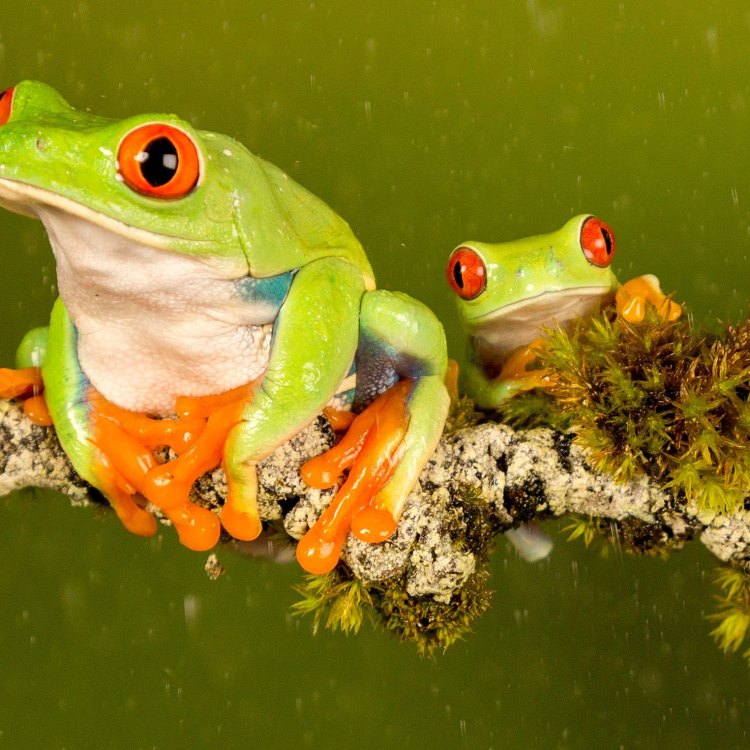
The Amazing Tree Frog: Nature's Little Acrobat
Disclaimer: The content provided is for informational purposes only. We cannot guarantee the accuracy of the information on this page 100%. All information provided here may change without prior notice.

